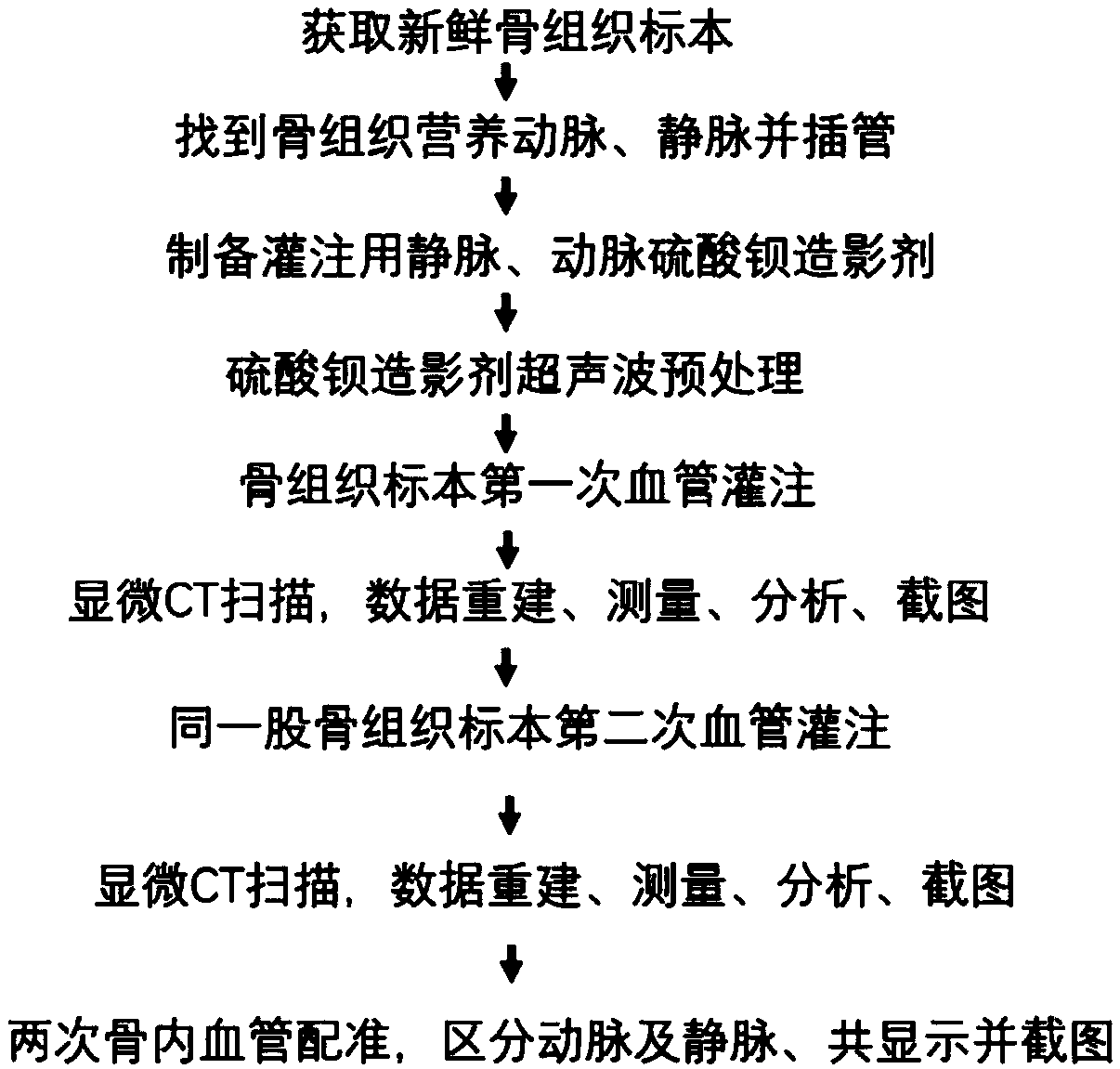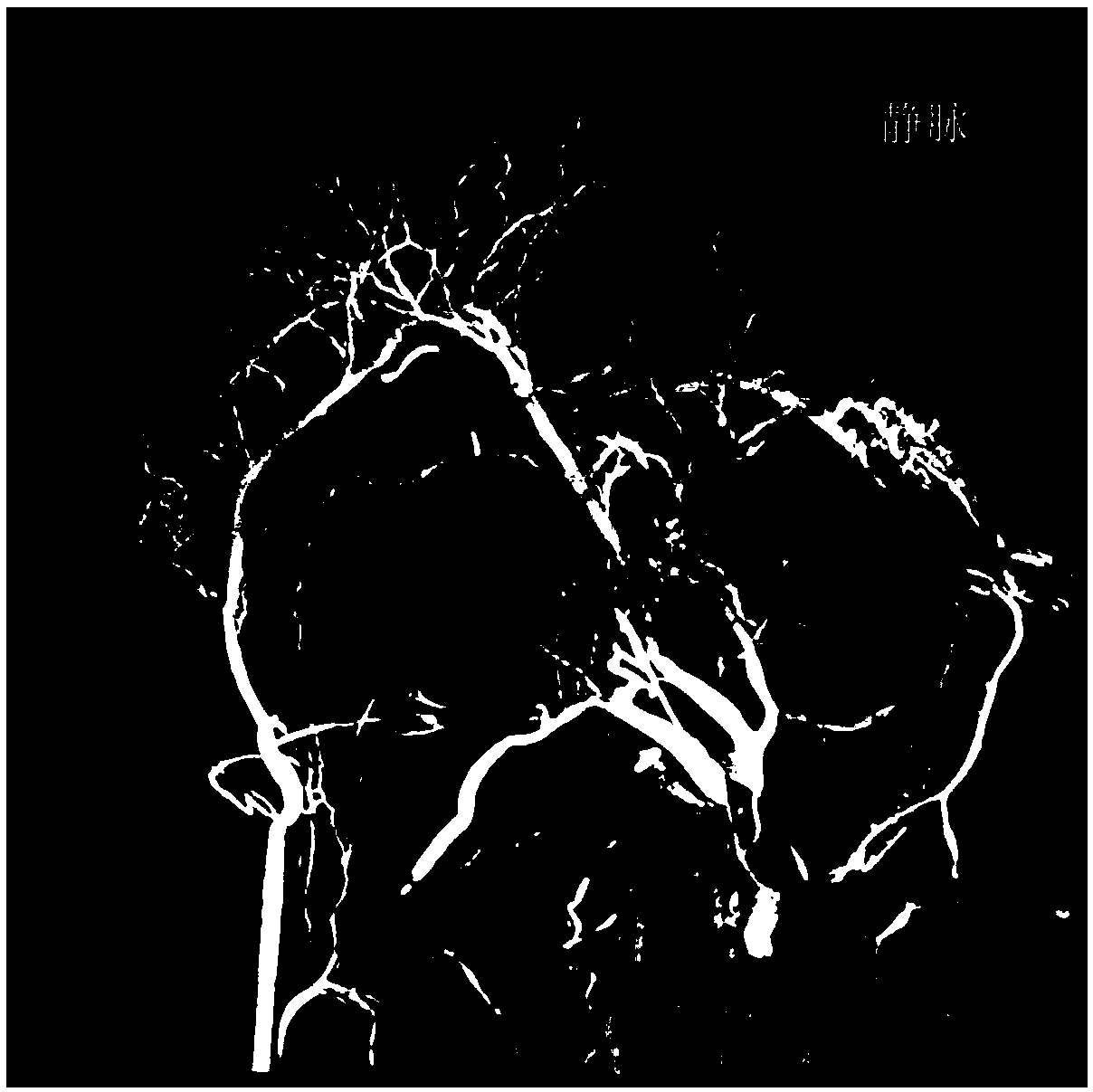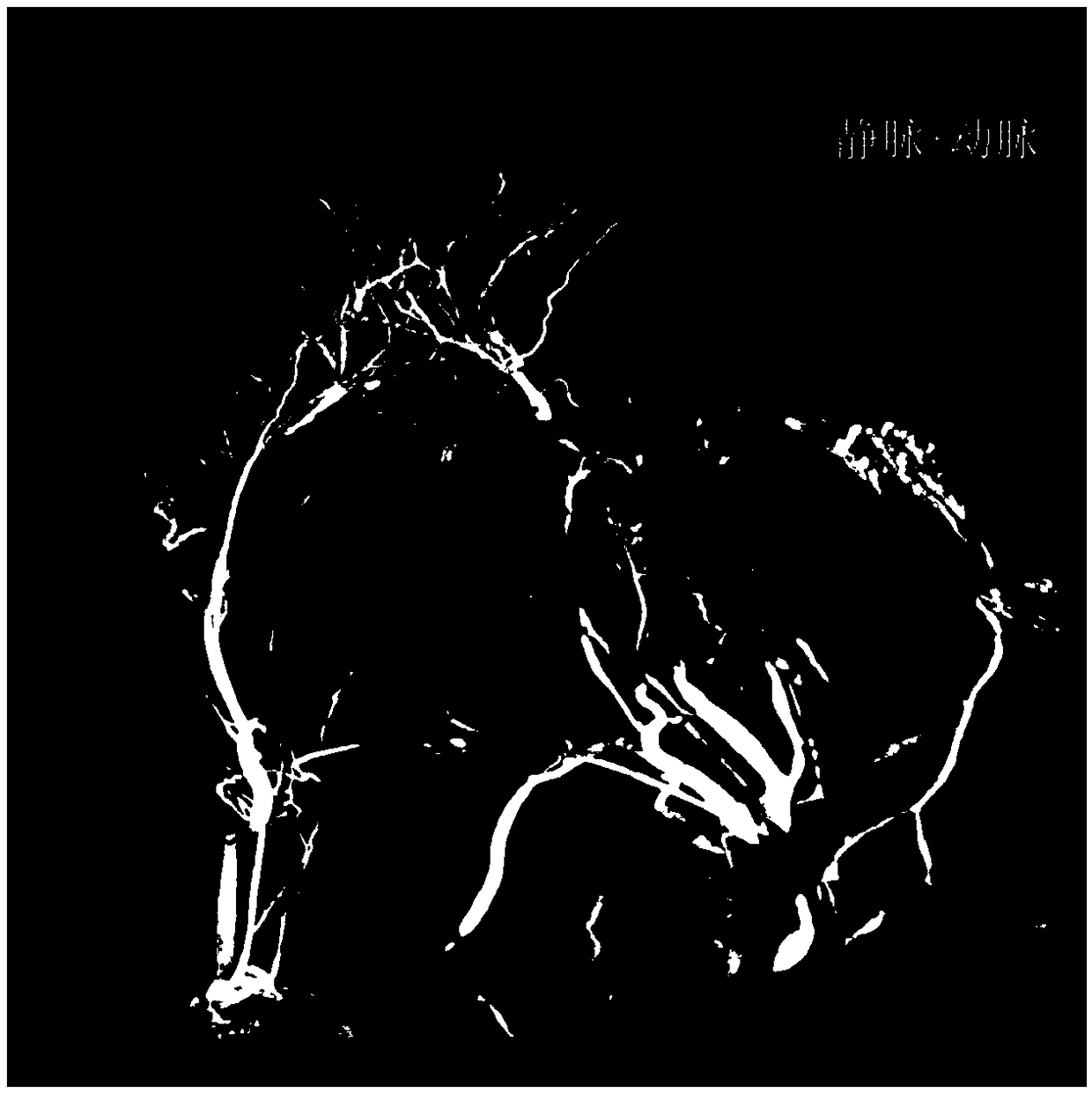A method for display intraosseous vein-artery blood vessel
An arterial blood vessel and display method technology, which is applied in the fields of healthcare informatics, instruments, computing, etc., can solve the problems of affecting data analysis, inability to measure the diameter of blood vessels, and cumbersome operations, so as to simplify the experimental process, shorten the research cycle, and improve the efficiency of research. Precise results
- Summary
- Abstract
- Description
- Claims
- Application Information
AI Technical Summary
Problems solved by technology
Method used
Image
Examples
Embodiment 1
[0059] Inferior retinal vein and arterial cannulation, retrograde perfusion of femoral head vein with gelatin barium sulfate contrast medium, antegrade perfusion of femoral head artery with gelatin barium sulfate contrast medium
[0060] (1) Use fresh pig femoral head specimens.
[0061] (2) Intubation of retinal veins and arteries: magnify 10 times under a microscope, use microscopic instruments to perform micromanipulation, and free retinaculum vessels. At the back of the femoral head and neck, look for the retinaculum vein under the femoral head, and use the back of the scalpel to squeeze the soft tissue of the femoral head and neck from the distal end to the proximal segment. At this time, it can be seen that there is venous blood in the venous lumen and it is filled with thin of the venous lumen. A 6# flat needle (outer diameter 0.6mm) was selected, the front of the needle was smooth, and the back was rough. The perfusion needle was intubated, ligated and fixed. Posteri...
Embodiment 2
[0073] Inferior retinal vein and arterial cannulation, carboxymethylcellulose barium sulfate contrast medium perfusion retrograde femoral head vein, carboxymethylcellulose barium sulfate contrast medium antegrade perfusion femoral head artery
[0074] (1) Use fresh pig femoral head specimens.
[0075] (2) Intubation of retinal veins and arteries: magnify 10 times under a microscope, use microscopic instruments to perform micromanipulation, and free retinaculum vessels. At the back of the femoral head and neck, look for the retinaculum vein under the femoral head, and use the back of the scalpel to squeeze the soft tissue of the femoral head and neck from the distal end to the proximal segment. At this time, it can be seen that there is venous blood in the venous lumen and it is filled with thin of the venous lumen. A 6# flat needle (outer diameter 0.6mm) was selected, the front of the needle was smooth, and the back was rough. The perfusion needle was intubated, ligated and f...
Embodiment 3
[0082] Inferior retinal vein and arterial cannulation, carboxymethylcellulose barium sulfate contrast medium perfusion retrograde femoral head vein, carboxymethylcellulose barium sulfate contrast medium antegrade perfusion femoral head artery
[0083] (1) Use fresh pig femoral head specimens.
[0084] (2) Intubation of retinal veins and arteries: magnify 10 times under a microscope, use microscopic instruments to perform micromanipulation, and free retinaculum vessels. At the back of the femoral head and neck, look for the retinaculum vein under the femoral head, and use the back of the scalpel to squeeze the soft tissue of the femoral head and neck from the distal end to the proximal segment. At this time, it can be seen that there is venous blood in the venous lumen and it is filled with thin of the venous lumen. A 6# flat needle (outer diameter 0.6mm) was selected, the front of the needle was smooth, and the back was rough. The perfusion needle was intubated, ligated and f...
PUM
 Login to View More
Login to View More Abstract
Description
Claims
Application Information
 Login to View More
Login to View More - R&D
- Intellectual Property
- Life Sciences
- Materials
- Tech Scout
- Unparalleled Data Quality
- Higher Quality Content
- 60% Fewer Hallucinations
Browse by: Latest US Patents, China's latest patents, Technical Efficacy Thesaurus, Application Domain, Technology Topic, Popular Technical Reports.
© 2025 PatSnap. All rights reserved.Legal|Privacy policy|Modern Slavery Act Transparency Statement|Sitemap|About US| Contact US: help@patsnap.com



